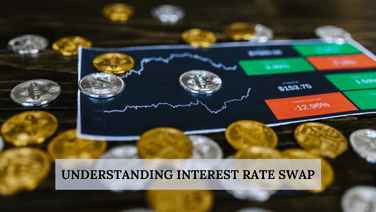Bloomberg Asian Dollar Index(ADXY)
29 June 2018 | By IFA Global | Category - Simplifying Financial Markets Jargon

KEY LEARNING POINTS
- ADXY- A suitable Index for tracking Asian currency performance
- Composition and Benefit of tracking ADXY
- Correlation of ADXY with Rupee across different time frame
ADXY- A suitable Index for tracking
Asian currency performance
ADXY is a better gauge for assessing the impact of broader USD on the Rupee as it tracks a basket of currencies of countries whose economies are more structurally aligned with that of India's economy. Depending on the risk sentiment, overseas investors generally tend to take a holistic view of the entire EM space. Therefore the degree of correlations between these currencies is fairly high. A higher ADXY implies strength in Asian currencies against the US Dollar and vice versa.
Composition and Benefit of tracking ADXY
The Bloomberg-JPMorgan Asia Currency Index is a spot index of Emerging Asia's most actively traded pairs valued against the U.S. Dollar. The composition of the index is primarily based on trade weights, with an added filter for liquidity that keeps the index abreast of macro and market trends. Index was also designed to bring new arena to the investment and risk management product with an aim to provide enhancing liquidity, efficient solution to help express a view on, or facilitate in, hedging a broad exposure to emerging Asia.
This index calculates the intraday value of Bloomberg-JPMorgan Asia Dollar Index. It is a trade and liquidity weighted index of ten Asian currencies against the US dollar. An increase in the index value suggests depreciation of the US dollar
Given table suggests that Chinese Yuan is holding the highest weightage in the ADXY with 41.18%, followed by South Korea with 12.88%, Singapore Dollar at 9.41 and India Rupee with 9.25%

Correlation of ADXY with Rupee across different time

Given chart suggests that over the last 1-year there is very high correlation between ADXY and Rupee movement. No doubt, there were some instances during Jan-Feb 2018, when rupee was depreciating and trading against its counter pairs, but ADXY was quite steady. During this time, heavy weight Yuan and Korean Won both were quoting at 3-year high levels. Over the period of time all the currencies who are having similar kind of fundamentals and economic situation moved in the same direction. Currently, all currencies are under pressure due to rising dollar, trade war between US and other Trump’s target countries like China, EU and India. Technically, ADXY has just entered into bearish mode as RSI fell below 30 mark.

Over the longer period with 5-year horizon, one can clearly observe that there has been positive correlation between ADXY and Rupee. Definitely, domestic fundamentals, political situation, central bank’s action and economic activity play a vital role. But all this lead to the last point that is “Trade Relation”- with the other global nation. Hence, one has to rely on other country for some or other reason. Hence, one can say that all the EM currencies are interlinked to each other and here is the reason to track ADXY.



